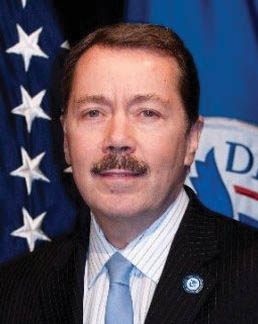— By Bill Flynn —
Preparedness is the best protection against workplace violence.
Restaurant and retail workers have been on the front lines of the COVID-19 pandemic since the beginning. Every day these essential workers are exposed to the risk of violence, potentially exacerbated by societal stressors including health concerns, economic uncertainty, political divisiveness and social unrest. In that heightened emotional state, the threat of active shooters has only increased, evidenced by a recent study from the Journal of the American Medical Association showing that since April 2020, there has been an additional person killed every 2 days in a mass shooting compared to previous years.

Bill Flynn, The Power of Preparedness
Outside of an active shooter event, the risk for workplace violence in restaurants and retail remains unnervingly high. In a recent study from One Fair Wage and the Food Labor Research Center at U.C. Berkeley, 54% of foodservice employees cited increased harassment at work, and 41% cited it as a reason to leave their jobs. Emotional stressors can trigger violence among coworkers or from customers, causing irreparable damage to employees’ sense of personal safety at work.
Workplace harassment can be of particular concern to fast food or quick-service restaurants, many of which operate late at night or 24 hours a day, staffed by young adults. These restaurants are conveniently located on major thoroughfares for quick access, and while this business style makes it convenient for customers, it can also make them an attractive target for workplace violence from intoxicated persons, robbers and other criminals.
As restaurants and retailers face an immense labor shortage and struggle to hire seasonal staff, doing everything to protect the safety and well-being of workers is essential. The focus of the industry has been on creating a safe, hygienic environment for their patrons and staff during COVID-19. It’s also critical to offer preparedness training that is accessible to all employees. Since restaurants and retailers face high employee turnover and varying shift schedules, many have found on-demand trainings in an e-learning environment to be best suited for reaching current staff and for training new hires.
While the “Run. Hide. Fight.” methodology is an essential tool, workers need more comprehensive training, including situational awareness and de-escalation techniques, to be prepared to respond appropriately to potential workplace violence.
Recognition Can Stop a Problem Before It Starts
Recognizing potential threats early is important, but with today’s workers stretched thin, it can be difficult for workers to focus on anything but the task at hand. Preparedness training will teach employees situational awareness, focusing on their surroundings, recognizing what is “normal” and what is an anomaly, and knowing how to respond if a threat presents itself.
It’s rare that people just “snap” and commit serious violence. In most cases people are on a pathway to violence, and it is on this pathway that trained co-workers, family and friends can identify troubling behavioral warning signs, presenting opportunities to get the troubled person emotional support or, depending on the severity, notify law enforcement. Behaviors on the “pathway to violence” can include:
- Extreme emotions
- Making threats, both verbally and through body language
- Changes in behavior, such as an extrovert suddenly becoming very reserved
- Increased use of alcohol or drugs
It’s important that workers recognize these indicators and report their concerns to management so emotional support services can be provided, but do not accuse the person directly, which could further agitate them.
De-Escalation is Key When Workplace Violence Strikes
Workplace violence is defined as “violence or threats of violence against workers consisting of verbal threats and abuse, physical threats or attacks that result in injury, property damage, fear or work impediment.” It can occur between coworkers, or between a worker and a customer, such as the violent encounters we’ve seen emerge in response to COVID-19 health-related mandates across the country.
Once an interpersonal interaction starts to escalate, workers with the proper training can use learned techniques to de-escalate a situation before it turns violent. Verbal de-escalation is the process by which a person in an agitated state can be “talked down” and spoken to in a manner that can defuse the situation. It can help the person toward a more reasonable state of mind and reduce the potential threat. People tend to “mimic” the behavior that they are confronted with, so de-escalation doesn’t come naturally. It takes training and practice. It’s important to realize that aggressive behavior is most often not directed at the person being spoken to, so employees should not take it personally.
Restaurant and retail workers should all be prepared to use verbal de-escalation techniques, which can include:
- Actively listening without judgement: Even if a worker does not agree with the aggressor, listening with empathy and being engaged can calm the aggressor.
- Using appropriate body language: Tension can make a situation worse, so it’s important that workers remain calm in their voice and posture, while standing a safe distance away from the aggressor.
- Thinking clearly and calmly: A racing mind interferes with a worker’s ability to evaluate and respond to the situation, so thinking methodically is necessary.
Trained employees can identify potential threats and use proper de-escalation techniques to regain control of a situation before it turns abusive or violent, or to buy time to notify security personnel.
Preparedness is Critical for Worst-Case Scenarios
Sometimes violent encounters are unavoidable. When violence does strike, training ensures that employees know how to react to protect themselves and customers. More than 70% of active shooter events end in under 5 minutes, according to the FBI. In the crucial first seconds of an attack, responding quickly and decisively is essential and can make the difference between who lives and who dies. Training creates “muscle memory” — realizing that everyone will experience initial panic and shock, but trained individuals will quickly grasp the gravity of a situation and react according to their training.
While there’s no way to predict when and where a violent event will take place, the threat of active shooters is rising each year in the United States. The real measure of risk is not just the probability of an event, but a combination of probability or likelihood, vulnerability to attack and the consequences an attack could have on your employees, customers, reputation and bottom line.
According to the Occupational Safety and Health Administration (OSHA), companies have an obligation to keep the workplace safe and secure, “free from recognized hazards that are causing or likely to cause death or serious physical harm.” If an active shooter event occurs and employees haven’t been trained, the employer may be deemed liable for failure to address reasonable threats to keep the workplace safe. Not only are lives and assets at risk, but the employer is also risking the reputation and financial liability of the business.
By the numbers, addressing security risks just makes sense. Physical security threats can result in a 50% decrease in productivity for an organization, 20-40% employee turnover, and an average of $500,000 in out-of-court settlements.
Considering the effects a violent attack could have on employees, customers, business reputation and ultimately the bottom line, businesses can’t afford not to prepare employees for active threats. Lives are on the line — training is crucial and fundamental to enhancing the preparedness of employees.
— William Flynn is co-founder of The Power of Preparedness, a next generation e-learning provider of industry-specific active shooter and workplace violence preparedness and response training. Flynn previously served as the principal deputy assistant secretary of the U.S. Department of Homeland Security’s Office of Infrastructure Protection.

